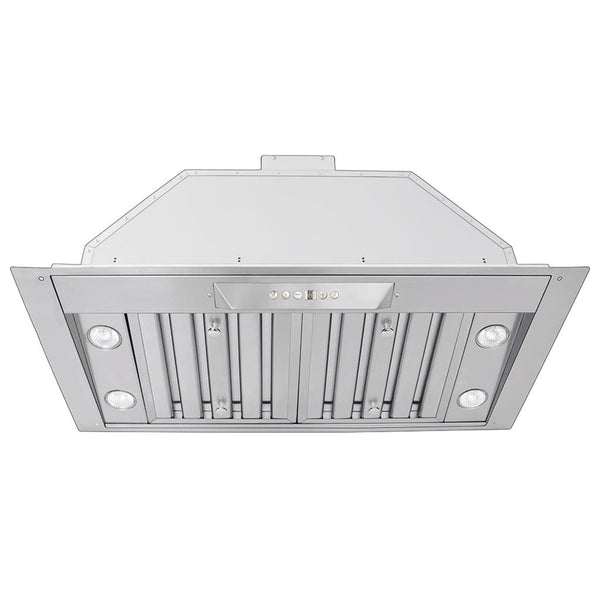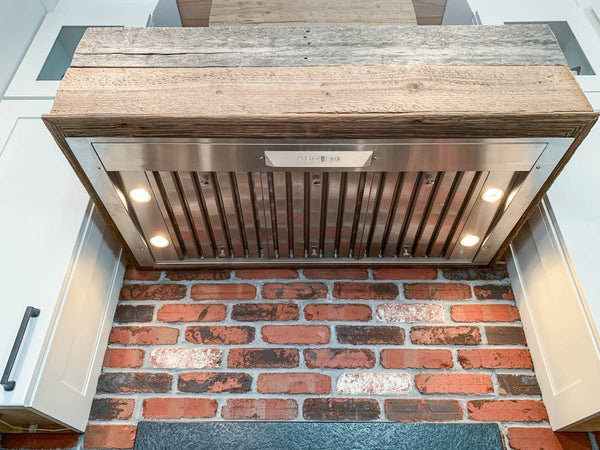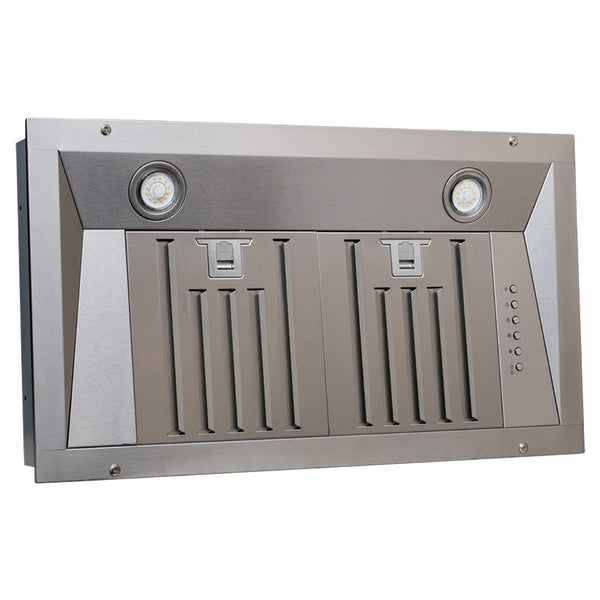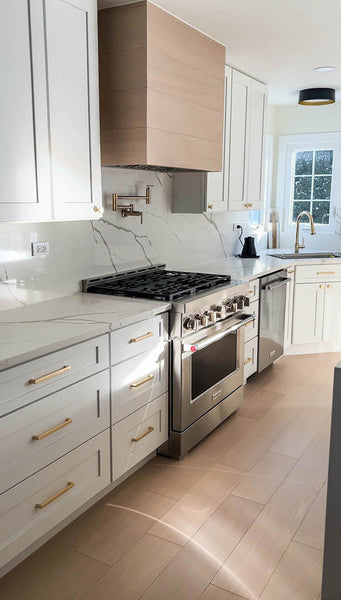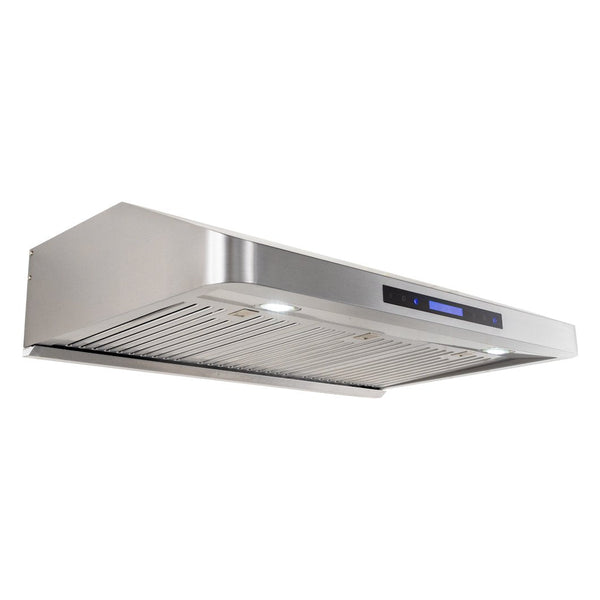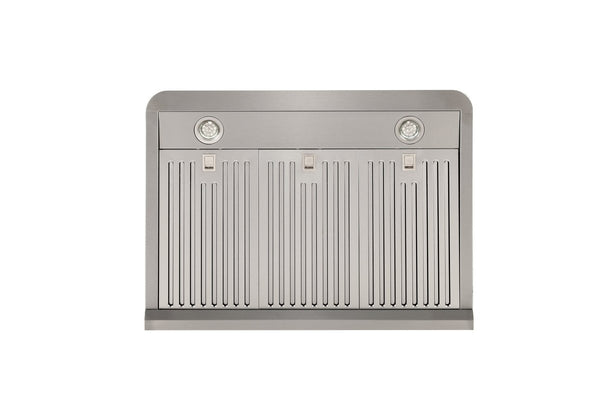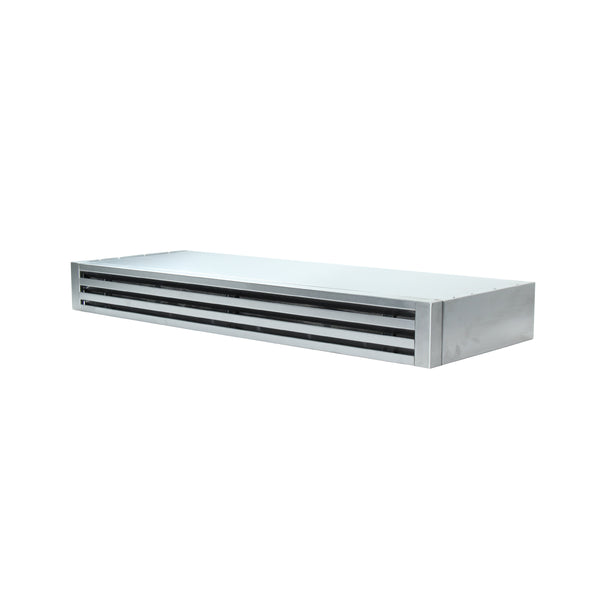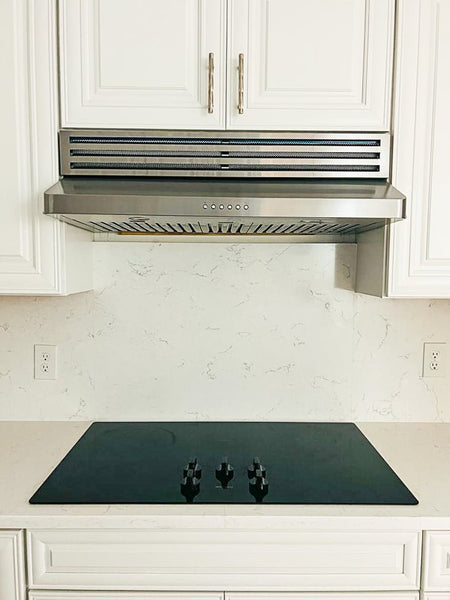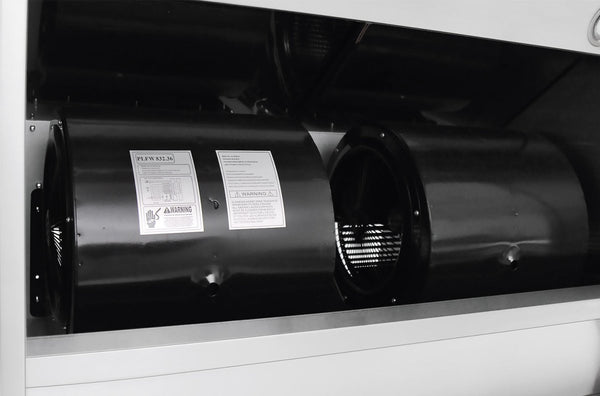Table of Contents
There is more to designing an outdoor kitchen than picking out appliances and finishes. Good planning is important. A key part is making sure your outdoor range hood is placed, sized, and installed correctly. Without it, smoke and heat can overwhelm your space, making your outdoor kitchen less enjoyable and even unsafe. Learn more about common mistakes and the right way to plan your outdoor cooking space.
5 Common Mistakes

1. Incorrect Positioning:
If you mount the hood too far back and it's centered on the grill lid, the smoke escapes before the hood can capture it. We saw this happen to one of our customers.
As you can see in the photo below the grill lid opens at the middle of the hood, leaving smoke to miss the hood. When it comes to outdoor range hood installation, this kind of placement is a dealbreaker.

Correct Placement
Instead, center the hood directly over the cooking surface. This allows the hood to pull in smoke before it spreads into the surrounding space.
Note: Every BBQ grill or outdoor kitchen varies, the main goal is to capture the smoke. It's best to align the hood over the center of the grilling surface. If you need to move the hood towards the front to ensure smoke capture, then that works well too.

2. Ignoring Wind Flow:
Designing without wind protection leaves your hood nearly useless on breezy days. Always add barriers to block crosswinds. Even small amounts of wind (2-3 MPH), may have severe impacts on hood performance. With strong winds and minimal coverage/protection, you get a less effective space.
3. Improper Ducting:
To start, NEVER use a flexible duct, this is not safe and can cause more harm than good. Using a flex duct is a fire hazard causing back pressure potentially damaging internal components like the blower. The hood becomes extremely noisy and will void the warranty.
Instead use rigid ducting. Just remember that long runs, elbows, or undersized ducts reduce airflow. Keep your duct path short, straight, and unrestricted, stick to the hoods specifications and always pair with high-quality termination caps.
4. Roof Terminations/Roof caps
Keeping your duct path short, straight, unrestricted, and sticking to the hood's specifications is optimal for performance. Along with ducting it's always paired with high-quality termination caps.
Keep in mind these 4 tips in choosing the right termination cap:
- Use caps that are properly sized and rated for your hood's CFM.
- An undersized or low-quality cap can choke the blower, restricting airflow and reducing efficiency.
- If venting through the roof, choose a cap designed for your roof pitch and shingle type.
- Keep in mind that wind and outdoor conditions can also affect cap performance.
By pairing quality ducting with the correct termination cap, you'll ensure your hood operates at peak performance and avoids long-term ventilation issues.
5. Undersizing the Hood:
A hood that is too narrow won't capture smoke effectively, and this problem only gets worse in an outdoor kitchen. Always size up generously for outdoor installations, Jeff Kasteller, one of Proline's installation experts, puts it bluntly:
"An undersized hood is a worthless hood"
If your hood is too small, you'll run into constant issues with smoke drifting into seating areas, grease settling on your countertops, and ventilation that doesn't keep up with your cooking. By investing in the right size from the start, you'll enjoy cleaner air, less mess, and a much more enjoyable outdoor cooking experience. Wonder what the correct sizing precautions you need? Keep reading and we will share that information later on.
What to Plan For
Hood Placement & Height
Your outdoor range hood must be centered over the cooking surface, not the grill lid. This subtle distinction makes a significant difference. If you mount the hood too far back, smoke escapes into the air before the hood can capture it. Centering directly over the cooking area ensures maximum capture efficiency, even when the lid is open.
Mounting height is also critical. Install your hood 36 to 42 inches above the cooking surface for optimal performance. If it is too low, the heat can damage the hood; if it is too high, smoke disperses before capture.
Hood Sizing
Outdoor conditions demand larger hoods than indoor kitchens. Your hood should extend at least 6 inches beyond the grill on each side, so ideally 12 inches all together or more. The wider the hood, the better it can contain smoke and grease, especially in open or windy spaces.
Wind Control
Outdoor air movement is the number one enemy of hood performance. Even a powerful hood struggles against strong breezes. To counter this, integrate built-in backstops or sidewalls into your kitchen design. These barriers block crosswinds and help the hood function at full efficiency.
Ductwork Planning
Your ducting path determines how effectively your hood can exhaust air. Plan it carefully:
- Keep duct runs as short and straight as possible.
- Avoid unnecessary elbows and restrictions.
- Use durable rigid ducting for long-term performance.
- Install proper roof or wall caps that allow unrestricted airflow and prevent backdrafts.
Ventilation Power (CFM)
Outdoor kitchens require more power than indoor kitchens. Here at Proline we recommend a hood with a rating of 1,200 CFM or more depending on your grill size, cooking habits, and wind exposure.
Have questions regarding what you need? Give us a call! Our US-based customer service will gladly assist you.
Additional Tips for Building Outdoor Kitchens
Plan Early in the Construction Phase
Ventilation should not be an afterthought. Incorporating the hood into your initial design phase allows for proper spacing, duct planning, and airflow considerations.
Consider Grill Placement
The grill's location in relation to surrounding walls, ceilings, and wind exposure can make or break your hood's performance. Place your grill where smoke can rise easily into the hood. Make sure strong winds do not block it.
Materials Matter
Outdoor hoods and ducting should be constructed with durable, weather-resistant materials like stainless steel. This ensures longevity despite exposure to heat, moisture, and the elements. Here at Proline we use 304 stainless steel 1.2 mm in thickness. This ensures excellent corrosion resistance and durability, perfect for outdoor applications.
Safety First
If your grill is under a pergola, roof, or any flammable structure, you must have a range hood for safety. Without one, smoke and heat buildup can cause damage or pose health risks.
Frequently Asked Questions
Most outdoor kitchens require a hood with at least 1,200 CFM. Larger grills or windy environments may demand even more power.
No. Outdoor hoods are designed with more power, larger capture areas, and weather-resistant materials.
Plan ducting early to ensure proper ventilation. We don't offer ductless options for outdoor range hoods here at proline. When grilling there is too much smoke and heat, that would make a ductless option ineffective.
At least 6 inches per side, so 12 inches or more for maximum coverage.
Yes. Professionals can design and install ductwork properly, preventing costly mistakes and ensuring maximum performance.
Final Thoughts
A properly designed outdoor range hood is essential to create a safe, effective and comfortable outdoor kitchen. Focus on the right placement and size. Control the wind effectively. Design the ductwork properly. Ensure there is enough CFM (Cubic Feet per Minute). This kitchen will also perform well for a long time.
